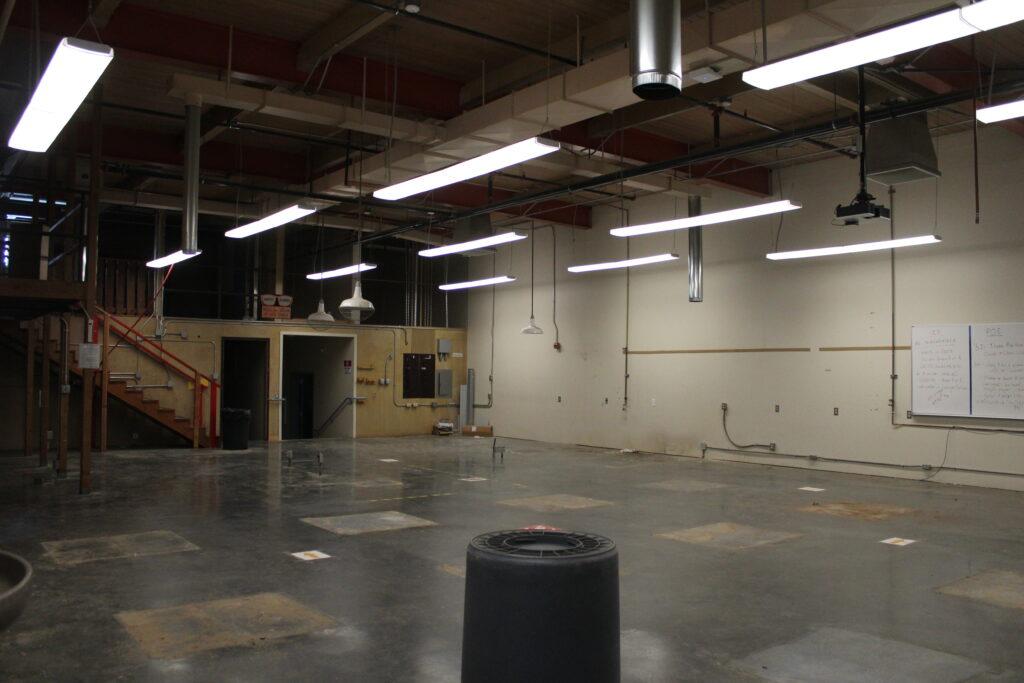When assistant principal Brian Thompson was hired here seven years ago, the school was buzzing with excitement over the construction of a new state-of-the-art music building. The building was funded by the Measure E bond.
Measure E, passed in 2014, is a $99 million local general obligation bond split between both Saratoga High and Los Gatos High to fund new infrastructure and school resources. So far, funds have gone to projects like building the new robotics room, turfing the upper field and providing new technology like Chromebooks for students.
The district has already spent roughly $74.4 million on Measure E projects.
This summer, Thompson said the school plans to use most of the remaining bond money allocated to Saratoga High to install a new heating, ventilation and air conditioning system (HVAC) in some wings, replace the baseball field’s grass with turf, replace single-pane windows in the gym, build a new pool shade for the poolside bleachers, install new roofs, remodel the covered walkways and remodel the engineering lab.
The hope is that these projects will be finished before the 2022-23 school year starts. The remodeling will, however, prevent the school from renting out its facilities to summer program organizations such as Los Gatos Rack and Maxwell Soccer.
Long overdue projects prioritized
The summer renovations seek to upgrade a long-overdue remodel to the engineering building; the work began over February break and will continue for the remainder of the school year. With a cost of approximately $3 million, the project will remodel the lab’s interior and add a working HVAC system. Windows will be added to provide sunlight, the ceiling lights will be secured and a new electrical panel will be installed.
According to engineering teacher Audrey Warmuth, the current lights do not satisfy the school’s earthquake safety standards. Warmuth is also concerned about the antiquated electrical panel, which would often blow when students used large amounts of current while soldering.
Since the engineering room shares infrastructure with the fitness center, the fitness center will also be closed for part of the summers, potentially impacting coaches who want to get a head start training athletes.
While the building is being remodeled, Warmuth has temporarily moved her classes into the robotics building, which has significantly less space. As a result, she has had to compromise between important inventory and working space. While the engineering classes still have a bin of materials and tools, the majority of the power tools from the engineering room will not be accessible during the remodel, although the robotics room contains many similar engineering power tools for student use.
“We’re super excited about the changes. It’s been in the works for a long time, and I’m really looking forward to working in a more healthy place, both emotionally and physically,” Warmuth said.
In addition to the overall building structure, the building’s heating system will also be upgraded. In the past, Warmuth said that the lack of a working heater and AC has been difficult for students to contend with
“It’s so hot in the summer and so cold in the winter, and that really just wears on you year after year,” Warmuth said.
The plan is to place individual HVAC systems in each room in the math, 100, 300 and 600 wings. Currently, these wings can only control temperature using a 25-year-old system within a range of five degrees, which is sometimes distributed unevenly throughout classrooms. Construction will begin on June 3, the first day after graduation, and end on Aug.15, the week of school reopening.
“The benefit is it will increase efficiency by giving teachers the ability to control the temperature in their own rooms for the comfort of their students,” Thompson said.
Baseball field to receive turf
Along with heating, the school plans to turf the baseball field, a renovation projected to start near the end of the school year and finish before the next baseball season in January 2023.
Despite the project’s high estimated cost of $4.45 million, baseball players said the change was necessary.
“Sometimes, when it rains a lot, we can’t practice because the field is so wet,” junior Lucas Dennis said. “All we can do is batting practice in the cages.”
In addition, a turf field requires less maintenance from the school. Currently, Saratoga’s landscape personnel must patch up missing grass, trim the edges and address any other natural deterioration before every season, resulting in additional costs.
Thompson is thankful for the community members and parents who supported the Measure E project and for helping create a positive impact on the community.
“I would like to thank our community in Saratoga and Los Gatos for voting for Measure E,” said Thompson. “For the last seven years that I’ve been on campus, it has been amazing to see the modernization and modernization of the school, and I truly believe that it impacts students in a positive way for their education, physical safety and emotional well-being.”


























